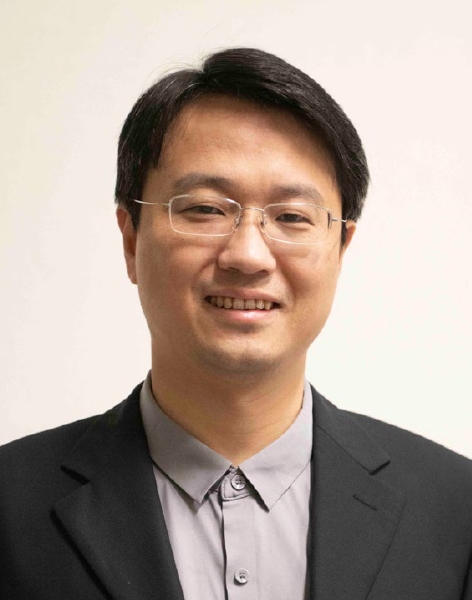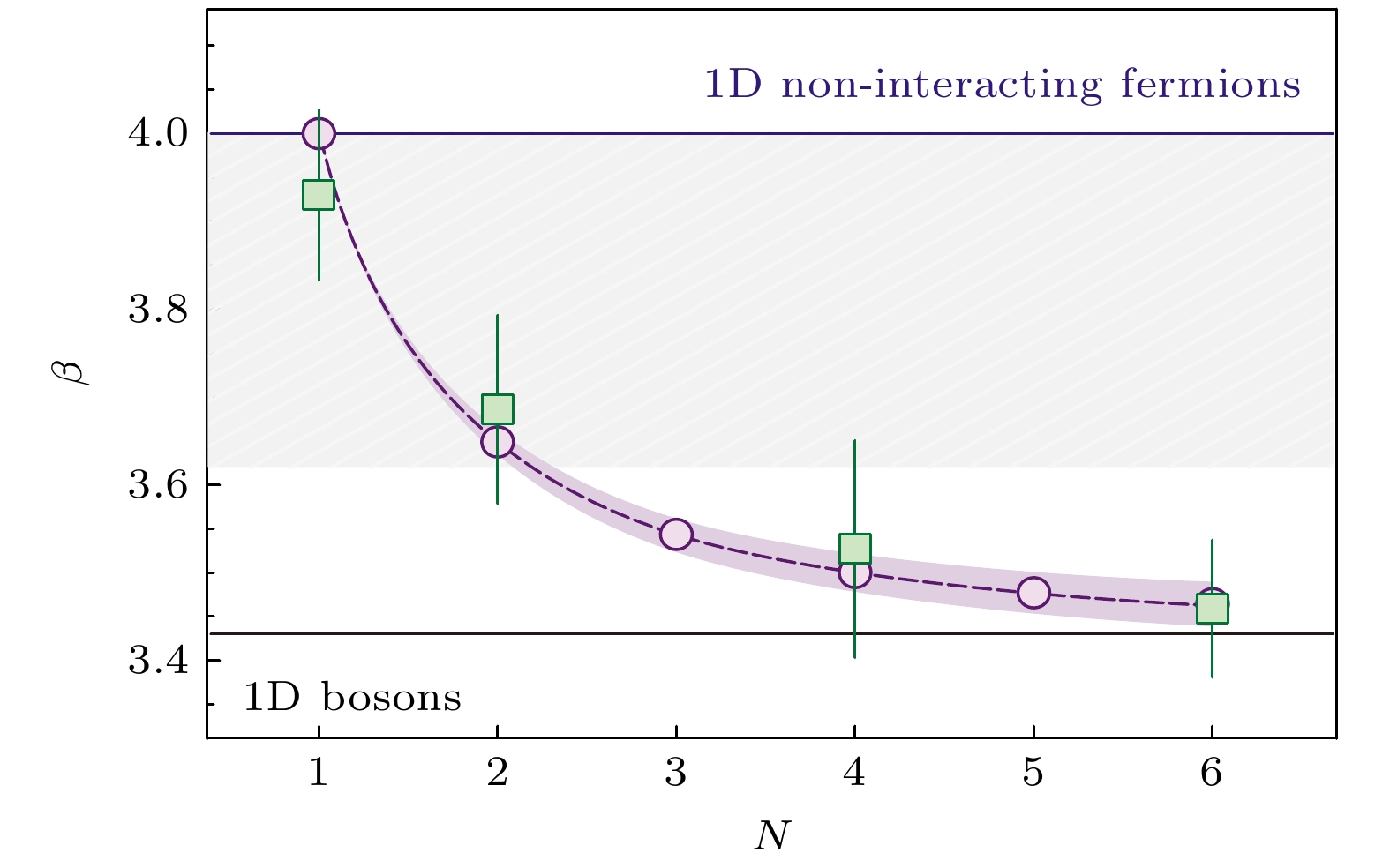-
早在20世纪50年代, 杨振宁先生和他的合作者们就意识到, 稀薄中性量子气体中最主要的相互作用效应可以被s-波散射长度来描述, 从而可以得到不依赖于粒子间相互作用的细节的普适描述. 这一洞见奠定了量子气体的理论基础. 他们还由此给出了玻色气体基态能量的表达式, 后来被称为“Lee-Huang-Yang修正”. 实验物理学家克服种种困难, 在近40年后的1995年, 才将冷原子气体冷却到量子简并. 此后, 冷原子物理展示出来种种优势, 包括相互作用和维度的可调控性以及测量的精密性, 这使之成为研究量子多体物理的理想平台之一. 多个冷原子实验观测到“Lee-Huang-Yang修正”的效应. 通过有效地降低系统维度, 冷原子实验对一维体系的研究, 还证实了杨先生在20世纪60年代提出的Yang-Yang thermodynamics. 2010年左右, 年逾八旬的杨先生再次研究一维可解模型, 他发现的一维多分量费米子系统的极限行为, 又很快被冷原子实验证实. 通过内态调控产生等效的人工维度, 冷原子体系还可以模拟高维体系的物理, 其中包括实验模拟了杨先生于20世纪70年代提出的SU(2)非阿贝尔规范场中的Yang monopole这一拓扑解. 这些冷原子物理的进展, 展示了杨先生的这些工作不仅具有理论的深度, 还对实际实验的发展具有长远的影响力.
-
关键词:
- 冷原子物理
As early as the 1950s, Prof. Yang and his collaborators realized that the most important interaction effects in a dilute quantum gas can be described by the s-wave scattering length between particles. This insight leads to universal descriptions of the interaction effects without the detailed knowledge of the interaction potential. They derived a formula expanding the energy density in terms of the gas parameter. This formula is later known as the Lee-Huang-Yang correction. However, it took forty years for the experimentalists to overcome several challenges and finally achieve degenerate quantum gases of atoms in 1995. The developments after 1995 have led to an exciting field known as “quantum gases” or “ultracold atomic gases”. The ultracold atom system has flexible tunability, allowing both the scattering length and the dimensionality to vary. The Lee-Huang-Yang corrections were observed from several experiments on ultracold atoms by increasing the scattering length. In addition, by reducing the dimensionality to one-dimension, several experiments on ultracold atoms have confirmed the Yang-Yang thermodynamics for one-dimensional bosons that Prof. Yang obtained in the 1960s and the large-N limit of one-dimensional fermions that Prof. Yang obtained around 2010. By increasing the dimensionality through using the idea of synthetic dimension, the experiment on ultracold atoms has also demonstrated the Yang monopole in the SU(2) non-abelian gauge field proposed by Prof. Yang in the 1970s. All of these experiments show the long-lasting impact of Prof. Yang’s theoretical work over several decades.-
Keywords:
- ultracold atomic physics
[1] Lee T D, Yang C N 1956 Phys. Rev. 104 254
 Google Scholar
Google Scholar
[2] Lee T D, Yang C N 1956 Phys. Rev. 105 1119
 Google Scholar
Google Scholar
[3] Lee T D, Huang K, Yang C N 1957 Phys. Rev. 106 1135
 Google Scholar
Google Scholar
[4] Anderson M H, Ensher J R, Matthews M R, Wieman C E, Cornell E A 1995 Science 269 198
 Google Scholar
Google Scholar
[5] Davis K B, Mewes M O, Andrews M R, van Druten N J, Durfee D S, Kurn D M, Ketterle W 1995 Phys. Rev. Lett. 75 3969
 Google Scholar
Google Scholar
[6] Huang K, Yang C N 1957 Phys. Rev. 105 767
 Google Scholar
Google Scholar
[7] Cornell E A, Wieman C E 2001 Rev. Mod. Phys. 74 875
 Google Scholar
Google Scholar
[8] Zhai H 2021 Ultracold Atomic Physics (Cambridge: Cambridge Universit Press)
[9] Chou T T, Yang C N, Yu L H 1996 Phys. Rev. A 53 4257
 Google Scholar
Google Scholar
[10] Chou T T, Yang C N, Yu L H 1997 Phys. Rev. A 55 1179
 Google Scholar
Google Scholar
[11] Altmeyer A, Riedl S, Kohstall C, Wright M J, Geursen R, Bartenstein M, Chin C, Denschlag J H, Grimm R 2007 Phys. Rev. Lett. 98 040401
 Google Scholar
Google Scholar
[12] Shin Y I, Schirotzek A, Schunck C H, Ketterle W 2008 Phys. Rev. Lett. 101 070404
 Google Scholar
Google Scholar
[13] Papp S B, Pino J M, Wild R J, Ronen S, Wieman C E, Jin D S, Cornell E A 2008 Phys. Rev. Lett. 101 135301
 Google Scholar
Google Scholar
[14] Navon N, Nascimbene S, Chevy F, Salomon C 2010 Science 328 729
 Google Scholar
Google Scholar
[15] Navon N, Piatecki S, Günter K, Rem B, Nguyen T C, Chevy F, Krauth W, Salomon C 2011 Phys. Rev. Lett. 107 135301
 Google Scholar
Google Scholar
[16] Skov T G, Skou M G, Jorgensen N B, Arlt J J 2021 Phys. Rev. Lett. 126 230404
 Google Scholar
Google Scholar
[17] Bethe H A 1931 Z. Physik 71 205
 Google Scholar
Google Scholar
[18] Yang C N 1967 Phys. Rev. Lett. 19 1312
 Google Scholar
Google Scholar
[19] Yang C N, Yang C P 1969 J. Math. Phys. 10 1115
 Google Scholar
Google Scholar
[20] Lieb E, Liniger W 1963 Phys. Rev. 130 1605
 Google Scholar
Google Scholar
[21] van Amerongen A H, van Es J J P, Wicke P, Kheruntsyan K V, van Druten N J 2008 Phys. Rev. Lett. 100 090402
 Google Scholar
Google Scholar
[22] Yang C N, You Y Z 2011 Chin. Phys. Lett. 28 020503
 Google Scholar
Google Scholar
[23] Pagano G, Mancini M, Cappellini G, Lombardi P, Schafer F, Hu H, Liu X J, Catani J, Sias C, Inguscio M, Fallani L 2014 Nat. Phys. 10 198
 Google Scholar
Google Scholar
[24] Zhai H 2015 Rep. Prog. Phys. 78 026001
 Google Scholar
Google Scholar
[25] Yang C N, Mills R L 1954 Phys. Rev. 96 191
 Google Scholar
Google Scholar
[26] Yang C N 1978 J. Math. Phys. 19 320
 Google Scholar
Google Scholar
[27] Sugawa S, Salces-Carcoba F, Perry A R, Yue Y, Spielman I B 2018 Science 360 1429
 Google Scholar
Google Scholar
-
图 1 “Lee-Huang-Yang修正”的实验证实. 纵轴压强
$ h $ 反映了系统的状态方程, 横轴是$ \mu {a}^{3}/g $ . 这里,$ a $ 就是文中的散射长度$ {a}_{\mathrm{s}} $ ;$ \mu $ 是巨正则系统的化学势;$ g=4\mathrm{\pi }{\hslash }^{2}a/m $ ,$ m $ 是原子的质量. 黑色点是实验结果, 红色实线是加入“Lee-Huang-Yang修正”的理论结果, 黑色实线是蒙特卡罗计算的结果, 红色虚线是没有加入“Lee-Huang-Yang修正”的平均场结果. 插图是弱相互作用区域的结果 [15]Fig. 1. Experimental observation of the Lee-Huang-Yangcorrection. The equation-of-state, measured through the pressure h, is plotted as a function of
$ \mu {a}^{3}/g $ . Here$ a $ is the s-wave scattering length$ {a}_{\mathrm{s}} $ in the text.$ \mu $ is the chemical potential in the grand canonical ensemble.$ g=4\mathrm{\pi }{\hslash }^{2}a/m $ . The solid red line is theoretical result with the Lee-Huang-Yang corrections, and the solid black line is the result obtained by quantum Monte Carlo simulation. The red dashed line is the mean-field result without including the Lee-Huang-Yang corrections. The inset is a zoom-in plot of the weakly interacting regime[15].图 2 Yang-Yang Thermodynamics的实验证实 (a)—(d) 原位成像的密度分布; (e)—(h) 动量分布. 实线是Yang-Yang Thermodynamics的理论预言, 虚线是无相互作用玻色子的结果. 黑色的点是实验数据点[21]
Fig. 2. Experimental observation of Yang-Yang thermodynamics: (a)–(d) The in-situ density distribution; (e)–(h) the momentum distribution. The solid lines are obtained from the Yang-Yang thermodynamics and the dashed lines are the results of non-interacting bosons[21].
图 3 N分量一维费米气体的实验结果.
$ \beta ={\omega }_{\mathrm{B}}/{\omega }_{x} $ , 其中$ {\omega }_{\mathrm{B}} $ 是测得的沿$\hat{x}$ 方向系统呼吸模的频率,$ {\omega }_{x} $ 是沿$\hat{x}$ 方向谐振子势阱的频率. 横轴是费米子内态的数目N. 其中正方形方块是实验数据, 圆圈是理论预言. 上面的横线是无相互作用(N = 1)费米子的情况; 下面的横线是单分量玻色子的情况, 即$ N\to \infty $ 的极限情况[23]Fig. 3. Experiments on N-component one-dimensional Fermi gas.
$ \beta ={\omega }_{\mathrm{B}}/{\omega }_{x} $ , where$ {\omega }_{\mathrm{B}} $ is the breathing mode frequency along$\hat{x}$ and$ {\omega }_{x} $ is the harmonic trap frequency along$\hat{x}$ . This frequency is plotted as a function of the number of fermion components N. The squares are experimental data and the circles are theoretical predictions. The upper horizontal line shows the theoretical value for non-interacting Fermi gas (N = 1) and the lower line shows the result for spinless bosons, as$N \to \infty$ limit[23].图 4 实验观测到Yang monopole (a) 随着Yang monopole移入或移出球面, 系统拓扑的变化; (b) 第一类陈数(下图)和第二类陈数(上图). 第一类陈数总是零. 第二类陈数随着Yang monopole移出球面, 从1变成0[27]
Fig. 4. Experimental observation of Yang monopole: (a) Illustration of the topological transition when the Yang monopole moves out of the sphere; (b) the first (lower) and the second (upper) Chern number. The first Chern number is constantly zero and the second Chern number changes from unity to zero as the Yang monopole moves out of the sphere[27]
-
[1] Lee T D, Yang C N 1956 Phys. Rev. 104 254
 Google Scholar
Google Scholar
[2] Lee T D, Yang C N 1956 Phys. Rev. 105 1119
 Google Scholar
Google Scholar
[3] Lee T D, Huang K, Yang C N 1957 Phys. Rev. 106 1135
 Google Scholar
Google Scholar
[4] Anderson M H, Ensher J R, Matthews M R, Wieman C E, Cornell E A 1995 Science 269 198
 Google Scholar
Google Scholar
[5] Davis K B, Mewes M O, Andrews M R, van Druten N J, Durfee D S, Kurn D M, Ketterle W 1995 Phys. Rev. Lett. 75 3969
 Google Scholar
Google Scholar
[6] Huang K, Yang C N 1957 Phys. Rev. 105 767
 Google Scholar
Google Scholar
[7] Cornell E A, Wieman C E 2001 Rev. Mod. Phys. 74 875
 Google Scholar
Google Scholar
[8] Zhai H 2021 Ultracold Atomic Physics (Cambridge: Cambridge Universit Press)
[9] Chou T T, Yang C N, Yu L H 1996 Phys. Rev. A 53 4257
 Google Scholar
Google Scholar
[10] Chou T T, Yang C N, Yu L H 1997 Phys. Rev. A 55 1179
 Google Scholar
Google Scholar
[11] Altmeyer A, Riedl S, Kohstall C, Wright M J, Geursen R, Bartenstein M, Chin C, Denschlag J H, Grimm R 2007 Phys. Rev. Lett. 98 040401
 Google Scholar
Google Scholar
[12] Shin Y I, Schirotzek A, Schunck C H, Ketterle W 2008 Phys. Rev. Lett. 101 070404
 Google Scholar
Google Scholar
[13] Papp S B, Pino J M, Wild R J, Ronen S, Wieman C E, Jin D S, Cornell E A 2008 Phys. Rev. Lett. 101 135301
 Google Scholar
Google Scholar
[14] Navon N, Nascimbene S, Chevy F, Salomon C 2010 Science 328 729
 Google Scholar
Google Scholar
[15] Navon N, Piatecki S, Günter K, Rem B, Nguyen T C, Chevy F, Krauth W, Salomon C 2011 Phys. Rev. Lett. 107 135301
 Google Scholar
Google Scholar
[16] Skov T G, Skou M G, Jorgensen N B, Arlt J J 2021 Phys. Rev. Lett. 126 230404
 Google Scholar
Google Scholar
[17] Bethe H A 1931 Z. Physik 71 205
 Google Scholar
Google Scholar
[18] Yang C N 1967 Phys. Rev. Lett. 19 1312
 Google Scholar
Google Scholar
[19] Yang C N, Yang C P 1969 J. Math. Phys. 10 1115
 Google Scholar
Google Scholar
[20] Lieb E, Liniger W 1963 Phys. Rev. 130 1605
 Google Scholar
Google Scholar
[21] van Amerongen A H, van Es J J P, Wicke P, Kheruntsyan K V, van Druten N J 2008 Phys. Rev. Lett. 100 090402
 Google Scholar
Google Scholar
[22] Yang C N, You Y Z 2011 Chin. Phys. Lett. 28 020503
 Google Scholar
Google Scholar
[23] Pagano G, Mancini M, Cappellini G, Lombardi P, Schafer F, Hu H, Liu X J, Catani J, Sias C, Inguscio M, Fallani L 2014 Nat. Phys. 10 198
 Google Scholar
Google Scholar
[24] Zhai H 2015 Rep. Prog. Phys. 78 026001
 Google Scholar
Google Scholar
[25] Yang C N, Mills R L 1954 Phys. Rev. 96 191
 Google Scholar
Google Scholar
[26] Yang C N 1978 J. Math. Phys. 19 320
 Google Scholar
Google Scholar
[27] Sugawa S, Salces-Carcoba F, Perry A R, Yue Y, Spielman I B 2018 Science 360 1429
 Google Scholar
Google Scholar
计量
- 文章访问数: 12631
- PDF下载量: 527
- 被引次数: 0



























 下载:
下载:















